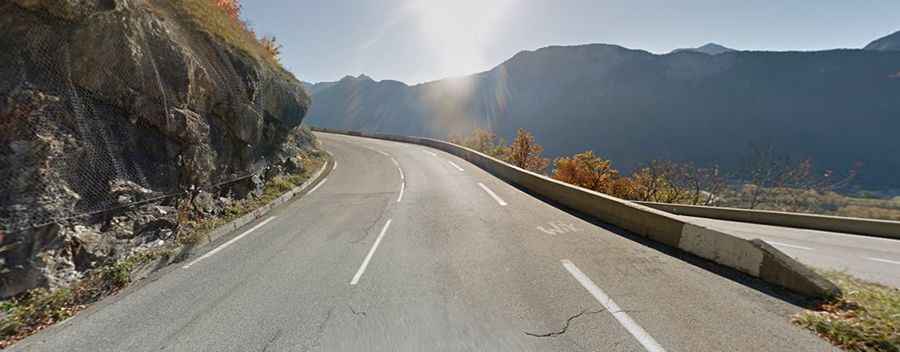Alpe d'Huez is a mythical climb with 21 hairpin turns
Alpe d’Huez is a cycling legend. It’s the most famous mountain climb in the Tour de France. Located in the Isère département of the Rhône-Alpes region in France, the ski resort is at an elevation of 1.860m (6,100ft) above sea level.

Where is Alpe d'Huez?
Alpe d'Huez is located in the southeastern part of the country, in the Central French Alps at the centre of the Oisans region, in the Romanche valley.
Is the road to Alpe d'Huez paved?
The road to the summit is fully paved. It’s called D211. Open to traffic throughout the year, may be closed for short periods in winter when the weather is bad. Each day during the summer, an average of 1000 riders climb this mythical ascent. The road is well known amongst cyclists, but is a great ride for anybody. Wide roads, great views, and at the top the Alpe d'Huez ski resort.
Why is Alpe d’Huez so popular?
The road to the summit is steep, hitting a maximum gradient of 13% through some of the ramps. Nicknamed 'l'Isle du Soleil' or The Island of the Sun, Alpe d'Huez is one of the top climbs of the Tour de France. It is one cycle race that you have to do in your lifetime. It’s not the longest or steepest climb in the French Alps, but it is relentless. From May to September, Alpe d’Huez Tourisme hands out more than 2,000 diplomas for “climbing the Alpe” (on foot or by bike) to cyclists criss-crossing these 21 bends, formalizing the time of their climb. This is given to athletes for a symbolic €1, donated to a charity association.
How long is the climb to Alpe d'Huez?
Starting from Le Bourg d'Oisans, the ascent is 13.8 km (8.6 mi) long, with an average gradient of 8.1%, and a maximum gradient of 13%. Alpe d'Huez is climbed regularly in the Tour de France. It was first included in the race in 1952. Cycling the climb is a mythical experience, a grand beast that conjures images of epic battles on its 21 hairpin bends and leg sapping slopes. Each of the 21 hairpin bends of the climb is named after one (sometimes two) of the stage winners, depending on where they placed their ultimate attack. The naming of the bends after Tour de France stage winners is a way to pay tribute to the history and tradition of the race and to the great riders who have contributed to its legacy over the years.